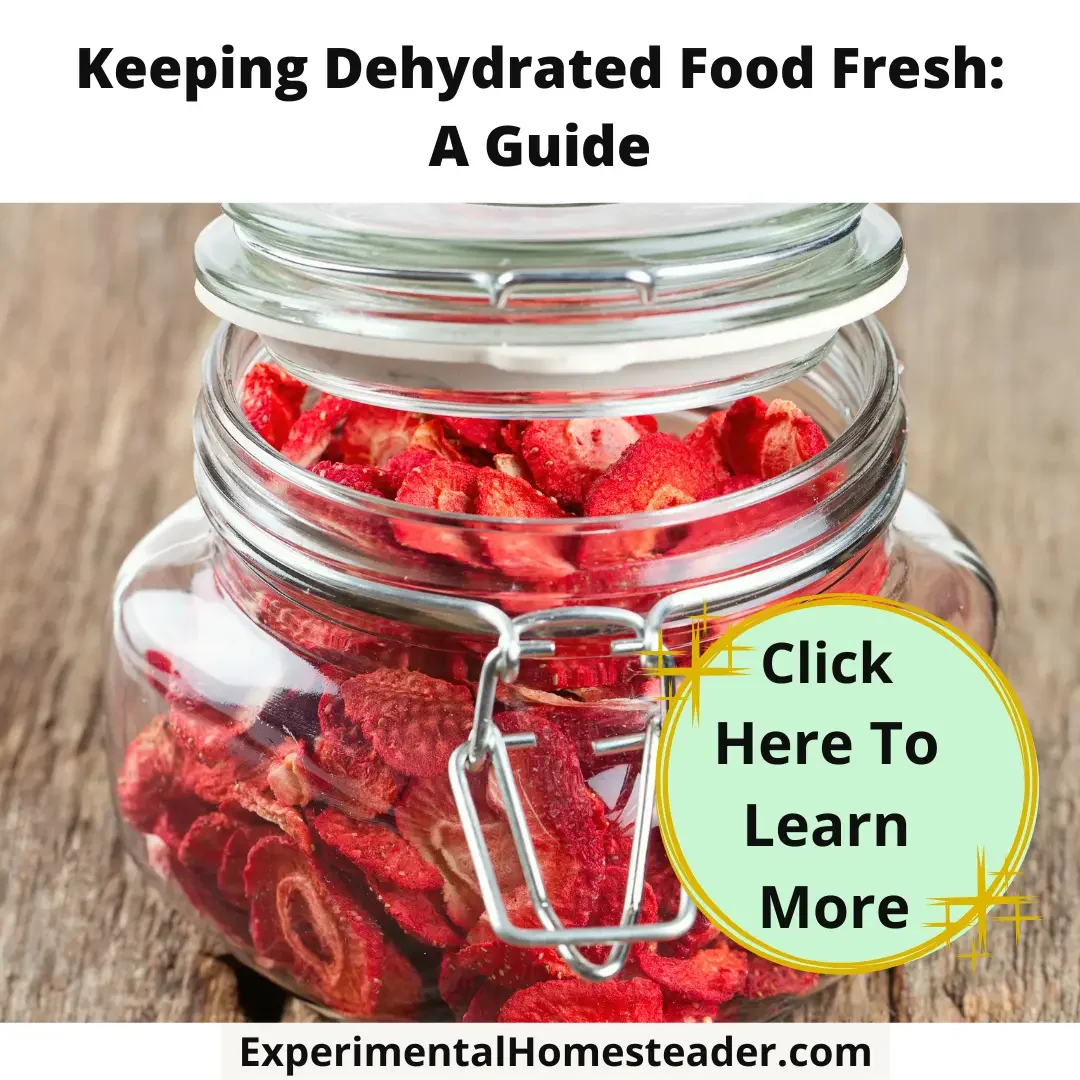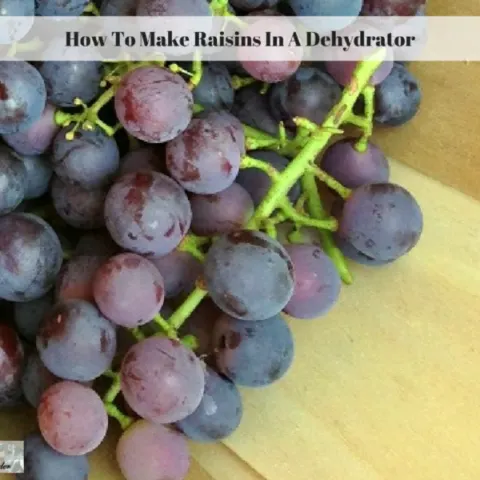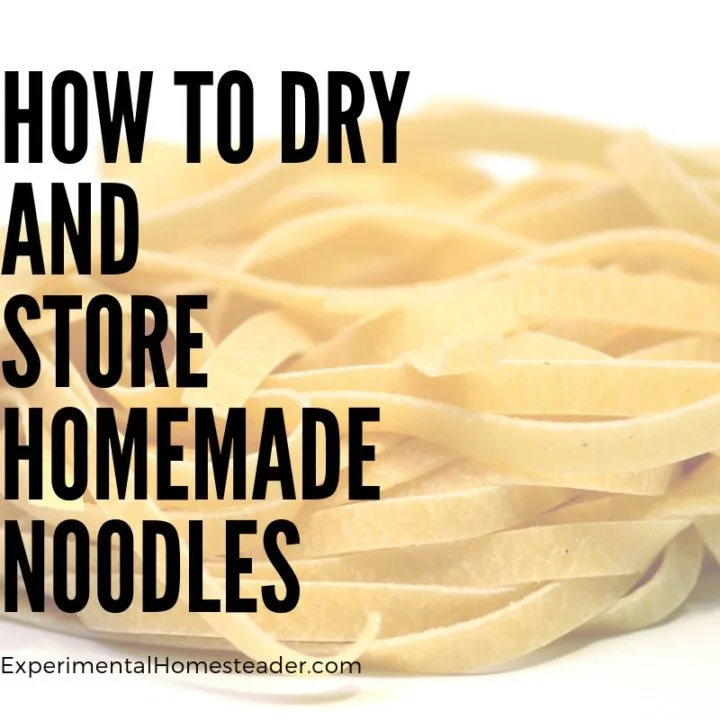Keeping dehydrated food fresh is not just a phrase but a crucial skill in the realm of food preservation.
Understanding the intricacies of preserving dehydrated foods is crucial for maintaining their freshness and maximizing their life span.
Right from the initial hydration methods to the final storage strategies, every step plays a vital role.
So, let's talk about keeping your dehydrated foods as fresh as possible.
Starting with the dehydration process, it's like a culinary art.
The way you dry your fruits, veggies, or meats sets the stage for their long-term quality.
But that's just the beginning.
When it comes to storage, factors like temperature, humidity, and light conditions come into play.
Trust me; these seemingly small details can significantly extend the longevity of your dehydrated foods.
And let's not forget the unsung hero: the storage container.
Whether you opt for a vacuum-sealed bag or an airtight jar, your choice can make or break the shelf-life and overall quality of your stored foods.
It's a bit like choosing the right armor for your culinary creations.
So, if you're an aspiring food preservationist eager to unlock the secrets of keeping dehydrated food fresh, you're in the right place.
We're about to delve deep into these topics, equipping you with the knowledge needed to become a master of preserving those delightful dehydrated delights!
Mastering Flawless Food Dehydration
Dehydration is a culinary marvel, cherished by cooking enthusiasts and food lovers alike.
It's a technique that involves extracting moisture from food while preserving its original flavor—a perfect blend of preservation and taste enhancement.
To understand the process, let's revisit the fundamentals.
Food dehydration relies on three key elements: heat to eliminate moisture, dry air to absorb released moisture, and air movement to carry it away.
A reliable food dehydrator plays a pivotal role in achieving these variables seamlessly.
Not all foods dehydrate the same way, and that's where the adventure begins.
Let's explore efficient methods for dehydrating various types of food.
- Dehydrating Fruits - Starting with fruits, the process is relatively straightforward. Begin by washing the fruit thoroughly and cutting them into thin slices. Then, place them on the dehydrator trays ensuring they don’t overlap. The heat setting should be approximately 135°F with an estimated duration of 6-12 hours. The more water content in a fruit, the longer it will take to dry out.
- Dehydrating Vegetables - The process for dehydrating vegetables closely mirrors that of fruits. The main difference is that many vegetables, such as peas or carrots, need to be blanched briefly before starting the dehydration process. Skip this step for onions, peppers, and mushrooms. Set the dehydrator at 125°F and count on 6-16 hours for the job well done.
- Dehydrating Herbs - For herbs, delicacy is key. Wash them in cold water and gently dry them, but be careful not to bruise the herbs. Typically I lay my herbs on paper a clean paper towel with cloth paper towels underneath and let them air dry for an hour or so before placing them in my dehydrator. The temperature of the dehydrator should not exceed 95°F for dehydrating herbs to maintain their delicate flavors. Moreover, it’s of vital importance to check on them every hour to prevent them from becoming too dry and brittle.
- Crafting Delectable Jerky - Jerky is a dehydrated meat favorite. Start by selecting lean cuts of meat for best results and trim off all visible fat before beginning the dehydration process. Muscles need to be marinated after slicing them against the grain, and then the dehydrating temperature should be set at 145-155°F. Dehydration duration can span 4-15 hours for meat, primarily depending on its thickness and fat content.
- Nuts and Seeds Dehydration - Finally, when it comes to nuts and seeds, soak them before dehydrating to lessen their enzyme inhibitors. Typically, the dehydration duration ranges from 12-24 hours at a temperature around 100-105°F. Always remember to stir them occasionally during the dehydration process for an evenly dried outcome.
The Art of Mastery
Mastering food dehydration is a journey of patience, practice, and understanding.
Each food type presents a unique challenge, adding to the excitement of this culinary adventure.
The ultimate goal?
Flawlessly dried foods, bursting with intensified taste, preserved nutrients, and an extended storage life.
Ideal Storage Conditions
Sublime satisfaction arises from peering into a pantry filled with neatly packed jars of dehydrated food.
A colorful array of fruits, vegetables, meats, and even herbs!
Just imagine a row of colorful dehydrated apples or dehydrated cherries in your pantry.
It's a testament to your dedication and energy and certainly something worthy of a brag or two.
But to ensure that dehydrated goodness retains its optimal quality and freshness, it's essential to pay attention to certain environmental factors.
Humidity: A Primary Culprit
When storing your dehydrated food, one of the most critical aspects to consider is humidity.
Humidity can penetrate containers and degrade the quality of food, reintroducing moisture that'll cause bacterial growth and spoilage.
This insidious destroyer is troublesome even for the most seasoned hobbyist.
Thus, it's paramount to store dehydrated food in a dry, cool place where humidity is relatively low.
Temperature: Tread With Caution
Temperature shifts can significantly affect the longevity of dehydrated food.
Ideally, your dehydrated stash should be kept in a place with a constant, cool temperature.
This isn’t to say you need a refrigerated vault, but a cool, dark corner in your pantry or basement should do the trick.
Dramatic changes in temperature can lead to condensation within packaging, creating an environment conducive to bacterial growth.
And honestly, who wants that?
Light Exposure: A Sneaky Adversary
Exposure to direct light is another environmental factor to reckon with.
Intense light, particularly sunlight, can degrade the color and nutritional value of dehydrated food.
Dark-colored or opaque containers can work wonders to combat this issue, or simply storing in a dark place will be sufficient enough to ward off the harmful effects of light.
Oxygen: Enemy of Longevity
Remember that it’s important not to underestimate the damaging potential of oxygen.
Oxidation can reduce the quality of your dehydrated food, causing spoilage and unpleasant flavor changes.
Therefore, using storage containers that are vacuum-sealed or oxygen-free is an effective way to ensure food longevity.
Oxygen absorbers placed within containers can provide an extra layer of prevention.
Air Quality: Often Overlooked
Lastly, the air quality of your storage space can impact the quality of your dehydrated food.
Storing food in environments filled with pungent smells or airborne contaminants can result in your food absorbing these unwelcome guests.
Combining oxygen-free storage with a clean, dry area will help keep your food from suffering such an unfortunate fate.
The splendid world of food dehydration takes patience, technique, and a smidge of finesse.
It serves as a link to the down-to-earth art of preservation, blending it with modern culinary arts to create a uniquely tangible experience.
Paying attention to these crucial environmental factors will ensure that your carefully dehydrated foods maintain not only their exceptional taste but also their nutritious value and most importantly, their safety.
Enjoy the fruits of your labor for years to come, one delicious, dehydrated bite at a time.
Choosing the Best Containers for Storing Dehydrated Food
Having mastered the particulars of preparing dehydrated foods, it's a keen idea to dive into the intricacies surrounding their storage.
Food preservation does not end after the dehydration process; optimal storage of dehydrated food plays a crucial role in maintaining its longevity, taste, and nutritional value.
The right type of container is of paramount importance.
- Glass Jars - Sealing dehydrated foods inside glass jars is an effective, easy, and aesthetically pleasing way to store them. Glass jars are moisture and odor-proof. They also don’t impart any residual taste onto the food. The kind with a rubber ring and a sealing lever offer the most airtight storage. It's a good reminder to ensure the jars are completely dry before adding the dehydrated food to prevent any unwanted moisture. Store these away from light to avoid depletion of nutrients.
- Food Storage Buckets - Larger quantities of dehydrated food are best stored in food-grade storage buckets. This option works well for long-term storage and for foods that are used in larger quantities, like fruits and veggies. Lids that have rubber gasket seals provide an airtight seal, keeping your food protected. Consider liners for an extra layer of protection, especially when storing in non-food-grade buckets.
- Vacuum Sealed Bags - This method is pretty popular thanks to its effectiveness in optimizing the storage life of dehydrated foods. Vacuum sealers remove the majority of the air, thus curbing the rate at which oxidation occurs and preserving the food's quality. Although one might argue light weighs against this method, storing the vacuum-sealed bags in a dark pantry or adding an additional layer of protection with a light-blocking bag or box can support in maintaining optimum nutritional value.
- Mylar Bags - Mylar bags offer superior light, moisture, and oxygen protection. With the aid of an oxygen absorber, a sealable Mylar bag becomes a fortress for dehydrated food against environmental factors that could degrade its quality. These bags are perfect for long-term storage.
- Canning Jars - Canning jars, such as Mason jars, work well for dehydrated food storage too. They are readily available, reusable, and sturdy. Canning jars with wide mouths work great for larger dehydrated items. A vacuum sealer with a jar attachment can create an amazing seal, making it another great storage option. Older canning jars, such as the blue jars, that are no longer good for canning work great and it is a wonderful way to keep them out of the landfills. Just be sure to choose jars without chips or cracks.
In conclusion, numerous effective containers can offer secure storage for dehydrated foods.
Different options work better for different scenarios: it could be due to the size of food, the quantity, storage space, budget, and more.
The selection lies in understanding the pros and cons of each container and determining how it fits the unique needs of your dehydrated food endeavor.
Remember, proper storage of dehydrated food will help maintain its flavor, nutrition, longevity, and the overall results of your food dehydration journey.
Savoring the Fruits of Your Efforts
Embracing correct dehydration methods for various foods, identifying the optimal storage environment, and choosing the appropriate storage containers are fundamental in preserving the freshness of dehydrated foods.
These factors greatly influence the shelf-life and quality of stored food, emphasizing their importance in the dehydration process.
Thus, broadening your understanding of these aspects will not only ensure that your dehydrated foods remain in the best possible condition but also extend their usefulness over time, providing a myriad of benefits for any food preservation enthusiast.
Equipped with this knowledge, you're empowered to embark on your food preservation journey with confidence, transforming fresh foods into lasting sustenance in the most efficient way possible.
How To Dehydrate Food
How To Make Raisins In A Dehydrator
Learn how to make raisins in a dehydrator. Learning how to make your own raisins from grapes is easy not to mention they are delicious!
How To Dehydrate Garlic Scapes
Garlic scapes are a gourmet seasoning that come on once a year in the spring. Learn another method for garlic scapes storage for year round use.
How To Dehydrate Cherries
Learn how to dehydrate cherries for long term storage or simply for a delicious, healthy fruit snack. It is really easy to dehydrate cherries at home.
Dehydrating Apples
Have you ever wondered about dehydrating apples? Learn how to dehydrate apples, how to store them and why you should dehydrate them.
Reusable Bakery Trays Make Great Produce Storage Trays
Bakery trays make great reusuable produce storage trays for root cellars or even for storing fruits or vegetables during the food preservation process.
How To Dry And Store Homemade Noodles
Learn how to dry homemade pasta plus the best method for storing homemade noodles so they stay fresh for up to six months!
Food Dehydration Tutorial
In this food dehydration tutorial you will not learn how to use a food dehydrator, but instead you will learn how to get started and why you should do it!
Four Factors That Affect Food Storage
Understanding the four factors that affect food storage is essential for keeping your food safe, especially if you intend to store it long term.
Canning Broccoli Is No Longer Safe But You Can Still Preserve It
Although canning broccoli was once considered safe, times have changed thus freezing, dehydrating or freee drying broccoli is recommended.
Preserving and Transforming Meals with Eggplant from Food Storage
Get creative in the kitchen with preserved eggplant. Explore the endless possibilities of transforming meals with eggplant from food storage.
Preserving Herbs For Winter Use eCourse
Do you love fresh herbs but wonder if there is an easy way to preserve them for the winter?
Do you seek other ways to use herbs other than just as a seasoning on food?
There are so many ways to preserve herbs for winter use – from various methods of drying them to freezing them, but it doesn’t end there.
Some of the best ways to preserve herbs in right in the foods you would normally incorporate herbs into – pre-made seasonings, teas, butter or oil.
Then this is the course for you!
What You Will Learn In This Course:
Hang herbs to dry
Use a hanging herb dryer
Dry herbs on a window screen dryer
Dry herbs in a dehydrator
Dry herbs in an oven
Dry herbs in a microwave
Freeze herbs whole
Make herb ice cubes
Add fresh herbs to freezer meals
Add herbs to canned sauces
Preserve herbs in vinegar
Preserve herbs in oil
Preserve herbs in butter
Preserve herbs in salt or sugar
Make pre-made seasonings
Make herbal tea
Make herb jelly (plus tips on how to use these)





















